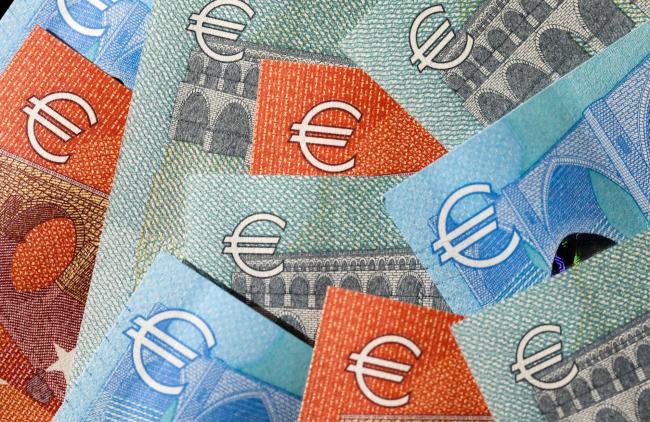(Bloomberg) -- For fresh highs in the euro, bulls need the go-ahead from the European Central Bank’s President as well as positive politics in a make-or-break week for the currency.
It’s not often that a currency faces so many risk events within a short period of time. Sunday’s Italian election and the German Social Democrats’ ballot on a coalition with Chancellor Angela Merkel come only a few days before Mario Draghi takes the stand on March 8 and the next U.S. payrolls report.
Economists surveyed by Bloomberg now expect the ECB’s Governing Council to revise the forward guidance on its asset-purchase program only by the June 14 meeting. There is therefore room for a hawkish surprise, especially if Draghi sees slowing euro-area inflation as transitory.
The euro fell in February for the first time in four months, yet it still trades higher this year as its bullish trend remains intact. Its rebound on Thursday amid a bearish technical signal for the greenback serves as a reminder of this. However, the trend faces a bigger test next week.
A win for the euroskeptics in the Italian vote or higher chances of fresh elections in Germany would be an inevitable drag for the common currency. A win for Italy’s anti-establishment Five Star Movement wouldn’t definitely mean a referendum on the euro, yet common currency bulls would not feel confident in adding more exposure.
Further political instability in the euro area’s largest economy may be a greater danger for the currency market as another grand coalition in Germany is the market’s base case scenario, longer-term risk reversals in euro-dollar show.
Euro bears would look for the 55-daily moving average support to give way on a closing basis. They would then need to challenge the all-important $1.2070-$1.2090 area, which supported the greenback up to Jan. 12, before the common currency rallied to its $1.2555 three-year high. A decisive close below could even mean a retracement toward $1.1554 on an Elliott wave basis.
Should the euro escape from political limbo, resistance at $1.2350 may briefly stand in the way before any Draghi-inspired rally. The ECB president has little ammunition to use when it comes to the euro and verbal intervention. On a trade-weighted basis, the common currency is 1 percent lower compared to the latest gathering in January, while its realized volatility versus the dollar has dropped near average levels.
The next big resistance level in euro-dollar comes near $1.2620, where the trendline since its all-time highs comes into play.
What to Watch:
- On Monday, March 5, EU Council President Donald Tusk may circulate draft negotiating guidelines about the future relationship between the EU and the U.K.
- U.S. President Donald Trump meets Swedish Prime Minister Stefan Lofven at the White House the next day
- Reserve Bank of Australia expected to leave policy unchanged, Governor Philip Lowe gives a speech in Sydney on March 7; other policy makers to speak next week include Bank of Canada Deputy Governor Timothy Lane, Chicago Fed President Charles Evans, New York Fed President William Dudley
- Nafta trade talks continue, through March 6
- Euro-area GDP; U.S. payrolls, durable goods, factory orders, unit labor costs; U.K. services PMI; see data calendar
